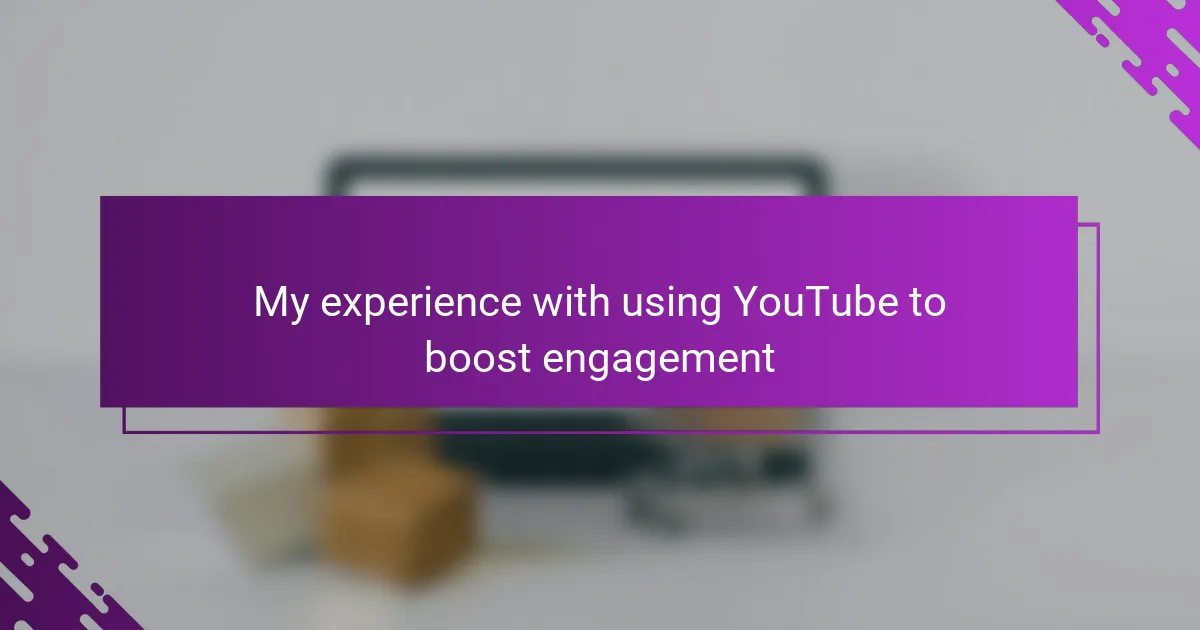Key takeaways
- Engagement metrics such as likes, comments, shares, and watch time are crucial for video performance on YouTube, influencing the algorithm’s favorability.
- Creating a clear channel brand, including a catchy name and professional visuals, helps attract and retain the right audience.
- Encouraging viewer interaction through direct questions and prompt responses fosters a sense of community and loyalty among viewers.
- Consistent content updates and a varied format keep the channel dynamic, helping to maintain audience interest and support sustained growth.
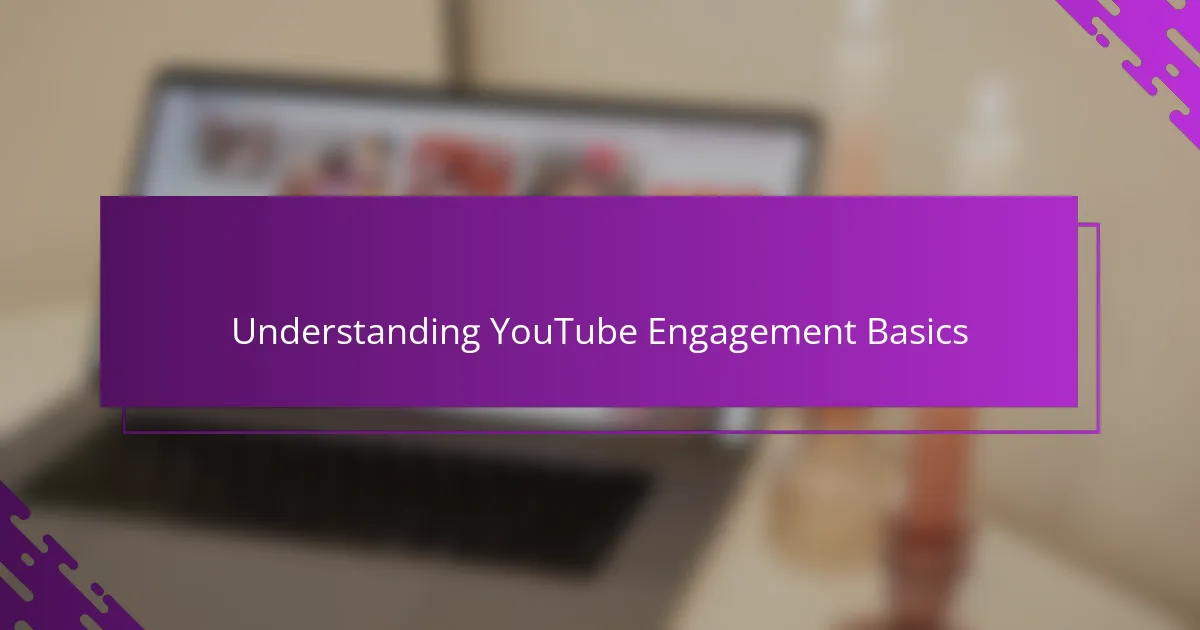
Understanding YouTube Engagement Basics
When I first started using YouTube, I underestimated how crucial engagement really is. It’s not just about the number of views; likes, comments, shares, and watch time all play a huge role in how your videos perform. I remember feeling excited each time a comment popped up—it was a small sign someone connected with my content.
Have you ever wondered why some videos seem to take off overnight? It’s because YouTube’s algorithm favors engagement, rewarding creators whose audiences interact more deeply. From my experience, encouraging viewers to like or comment can feel awkward at first, but it truly sparks conversations that build a community.
Also, I learned that watch time—the total amount of minutes people spend watching your videos—is a critical metric. Early on, I focused too much on views and ignored how long people stayed. Realizing this shift helped me create more engaging content that kept viewers hooked, making my channel grow steadily.
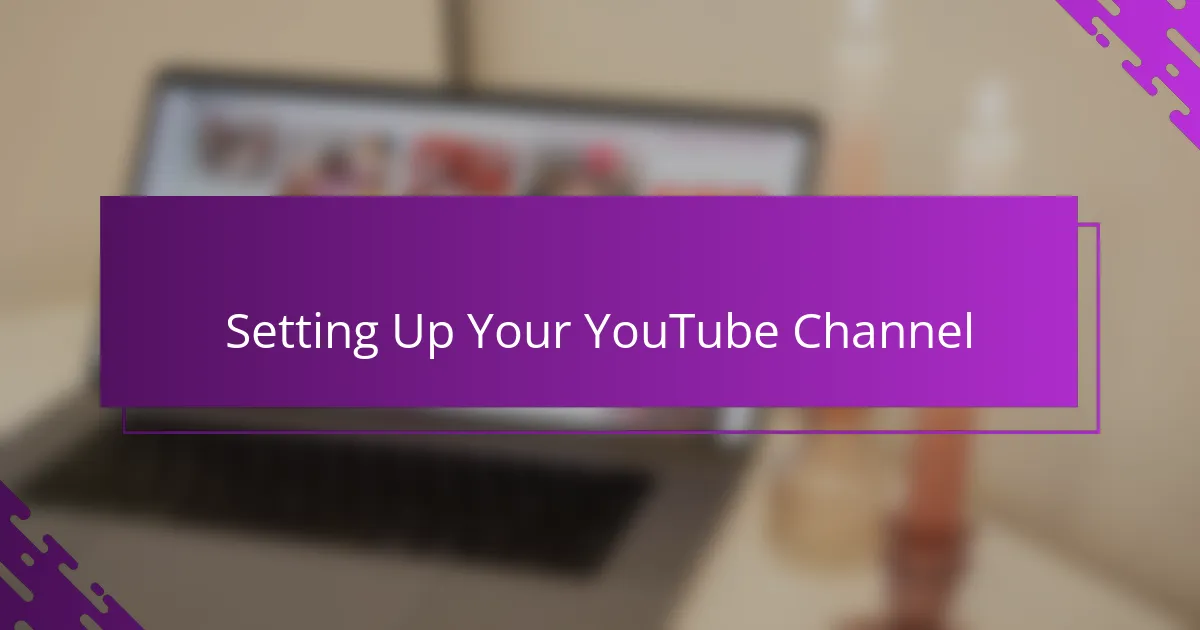
Setting Up Your YouTube Channel
Setting up my YouTube channel felt like opening a new door into the digital world. Choosing a channel name that reflected my personal brand was tricky—I wanted something catchy but genuine. Have you ever spent hours just trying to find the perfect name? I definitely did, and it made me realize how important first impressions really are.
Once I nailed the name, customizing my channel layout was next. Uploading a clear profile picture and an eye-catching banner gave my channel a professional vibe, which felt really rewarding. I remember feeling nervous hitting the “publish” button, hoping my visuals would attract the right audience.
Another thing I didn’t expect was how essential the channel description is. Writing it made me pause and really think about what I wanted to share and why. It was like setting my intentions out loud, and I found that having a clear purpose helped me stay focused as I created content.
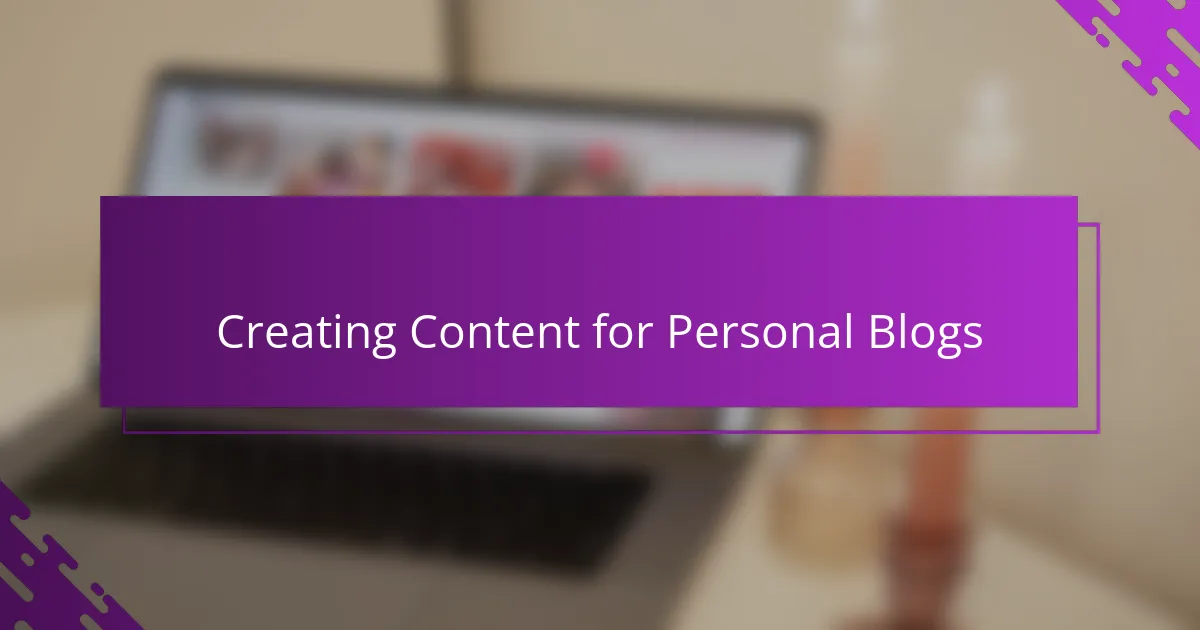
Creating Content for Personal Blogs
Creating content for a personal blog felt like opening a fresh chapter in my storytelling journey. I remember staring at a blank screen, wondering how to turn my thoughts into something that others would find interesting. Have you ever faced that moment of doubt, questioning if your everyday experiences are worth sharing? It’s a common hurdle, but I found that being authentic and honest made all the difference.
One thing that surprised me was how much planning went into each post. I didn’t just write whatever came to mind; I thought about what my readers might want to learn or feel from my stories. For example, when I shared a travel mishap, I made sure to include helpful tips to turn that experience into something useful, which really boosted my readers’ engagement.
I also realized that mixing up formats kept things lively—sometimes I wrote long, detailed posts, other times short reflections or even photo essays. This variety helped me stay creative and kept my audience intrigued, which in turn motivated me to keep producing content regularly. Have you tried switching up your style? It might just breathe new life into your blog too.
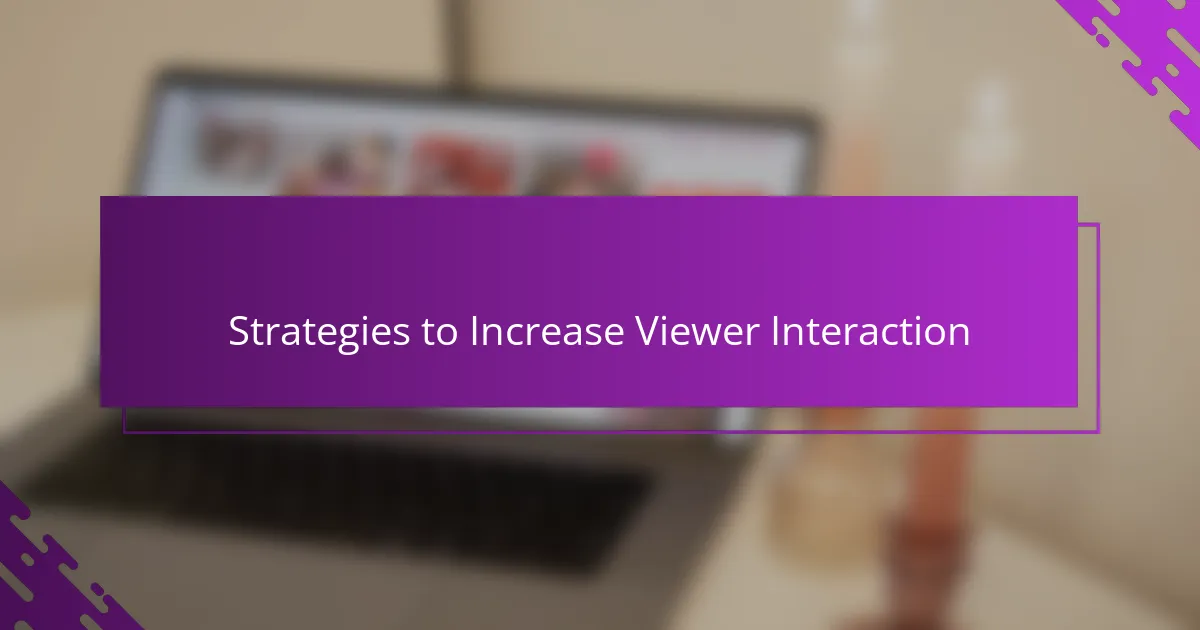
Strategies to Increase Viewer Interaction
One strategy I found effective was asking viewers direct questions at the end of my videos. It feels a bit vulnerable to put yourself out there like that, but it really encouraged people to drop comments and start conversations. Have you ever noticed how a simple “What do you think?” can turn a passive viewer into an active participant? That small nudge made a big difference in my channel’s engagement.
I also learned that responding to comments promptly builds a sense of community. When I replied to viewers, it showed them their opinions mattered, which made them more likely to come back and interact again. It’s like having a one-on-one chat in a busy online space—those personal connections helped my channel feel more welcoming and alive.
Another tactic I swear by is creating content that invites viewers to take small actions during the video, like pausing to reflect or trying a quick challenge. It made the experience interactive rather than just something to watch passively. From my experience, this approach not only boosted watch time but also increased likes and shares because people felt involved, not just informed.

Analyzing Engagement Metrics
Diving into engagement metrics felt a bit like learning a new language for me. I remember staring at my YouTube Analytics dashboard, overwhelmed by numbers like average view duration and click-through rate. But then I realized: these metrics tell a story about how my audience interacts with my content, and understanding that story was key to improving my videos.
Have you ever wondered why some videos keep viewers glued while others lose them halfway? I found that analyzing watch time patterns helped me spot exactly where people lost interest. That insight pushed me to edit more tightly and add hooks that kept viewers engaged longer, which, to my surprise, boosted overall performance.
I also paid close attention to the ratio of likes to dislikes and the nature of comments. When I noticed a sudden spike in dislikes, I didn’t just shrug it off—I dug deeper, read the comments, and adjusted my content accordingly. This back-and-forth made me realize that engagement metrics aren’t just numbers—they’re direct feedback guiding me toward creating content that genuinely resonated.
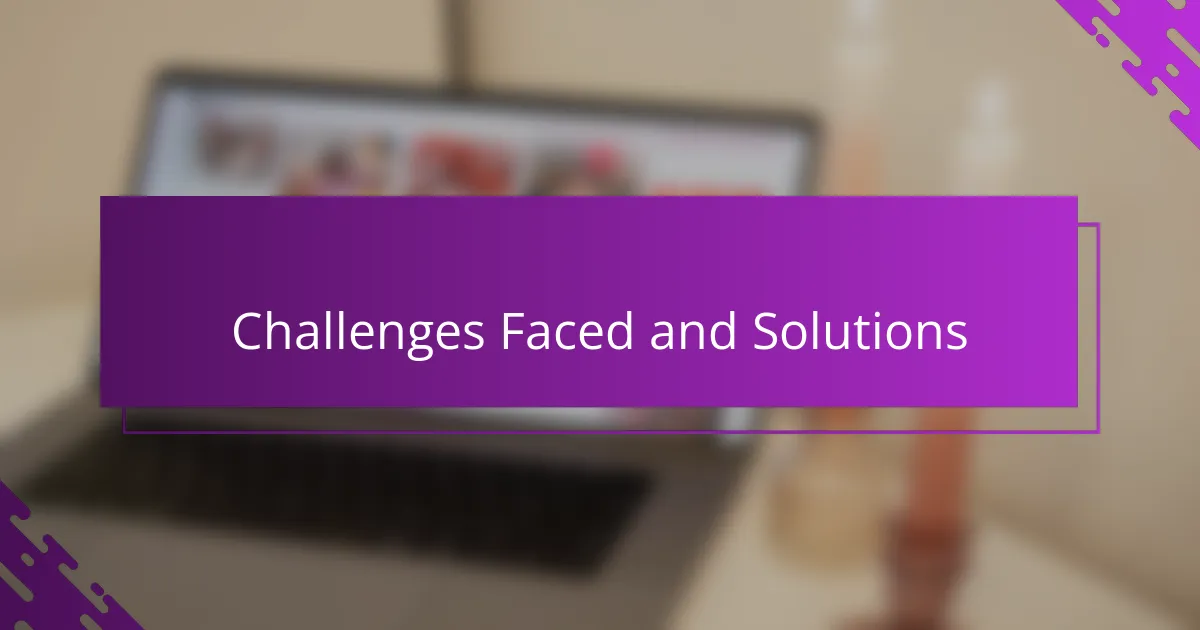
Challenges Faced and Solutions
One of the biggest challenges I faced was overcoming the initial awkwardness of asking viewers to engage. It felt strange to openly request likes or comments, almost like begging for attention. But then I realized, just being honest about wanting to connect made my audience feel more comfortable responding, and that vulnerability actually paid off.
Another hurdle was dealing with slow growth despite consistent effort. I wondered if I was missing something vital or if my content wasn’t good enough. Analyzing my metrics helped me spot patterns—like high drop-off points in my videos—which motivated me to tweak pacing and storytelling. That small adjustment ultimately kept viewers watching longer and increased engagement.
Technical issues also popped up unexpectedly. From video formatting problems to inconsistent audio quality, these glitches could easily frustrate viewers. What helped me was not shying away from learning basic editing skills and investing in affordable equipment. It might sound daunting, but those improvements made my content look and sound more professional, which made a noticeable difference in how people interacted with my channel.
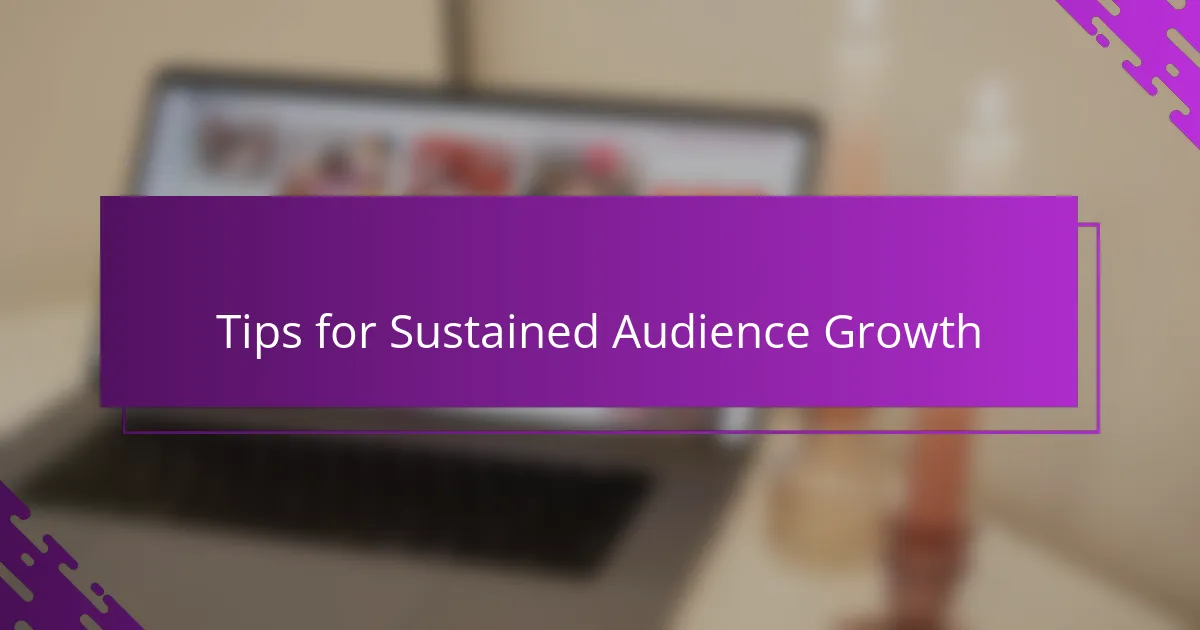
Tips for Sustained Audience Growth
Keeping a consistent upload schedule was a game-changer for me. I used to think I could post whenever inspiration struck, but I quickly learned that my audience craved predictability. Don’t you find it easier to follow someone who keeps a steady rhythm? That reliability builds trust, which in turn fuels sustained growth.
Another key I discovered was to constantly revisit and refresh my older videos. It felt a bit tedious at times, but updating titles, thumbnails, and descriptions brought new life to content I thought had run its course. Have you ever been surprised by how an old video suddenly gains traction again? That little effort can reignite audience interest and attract new viewers.
Lastly, I found that diversifying content types helped keep my channel dynamic and appealing over time. Mixing tutorials, storytimes, and Q&A sessions prevented my audience from getting bored and allowed me to tap into different viewer preferences. From my experience, variety is not just spice—it’s essential for long-term engagement.
